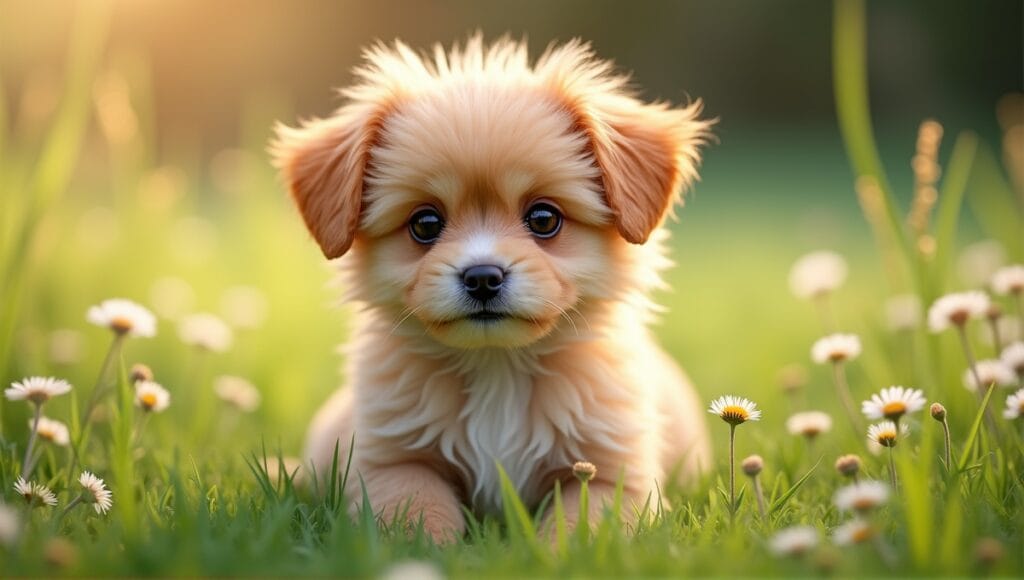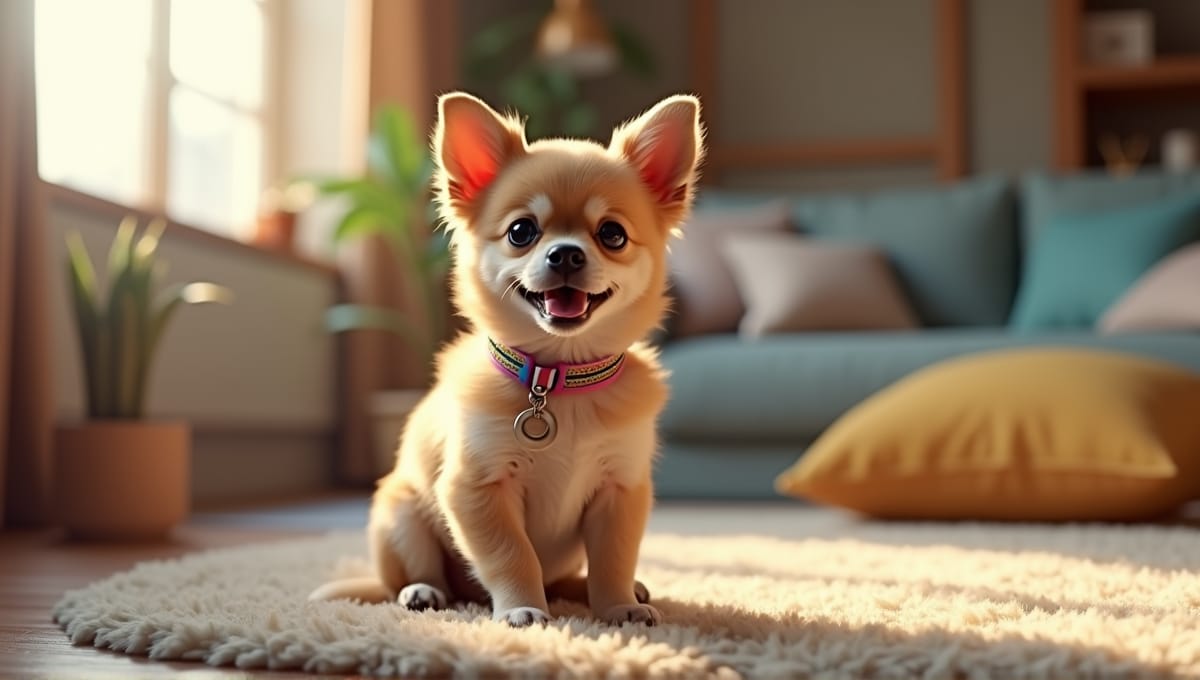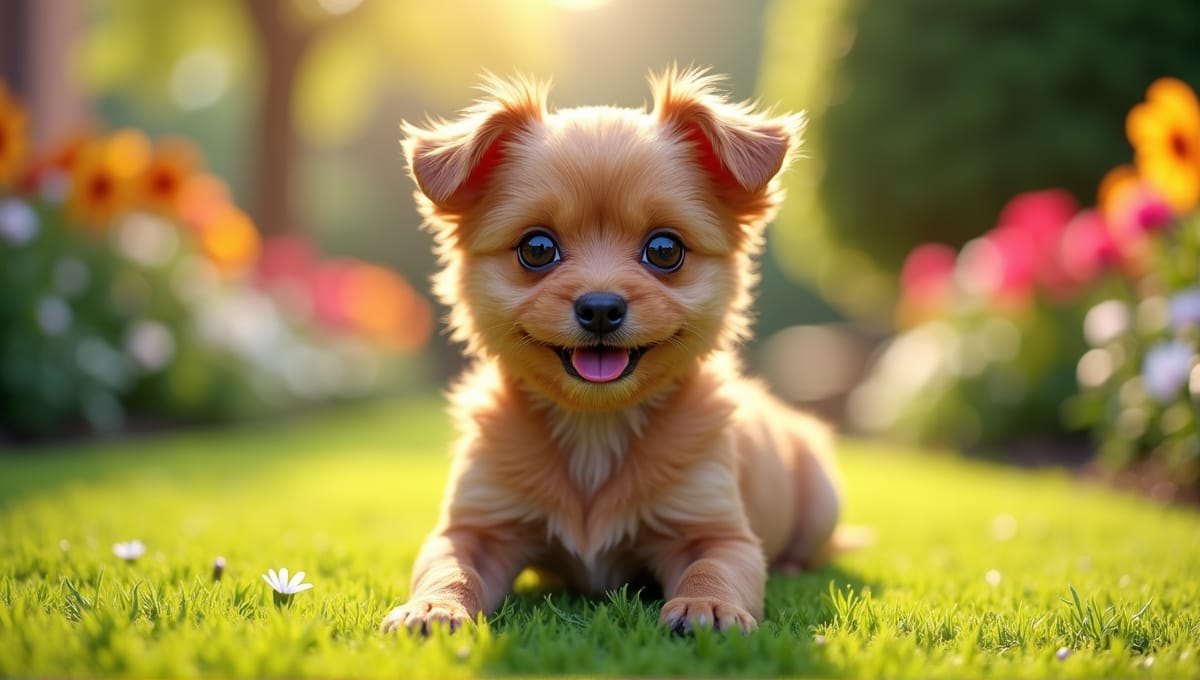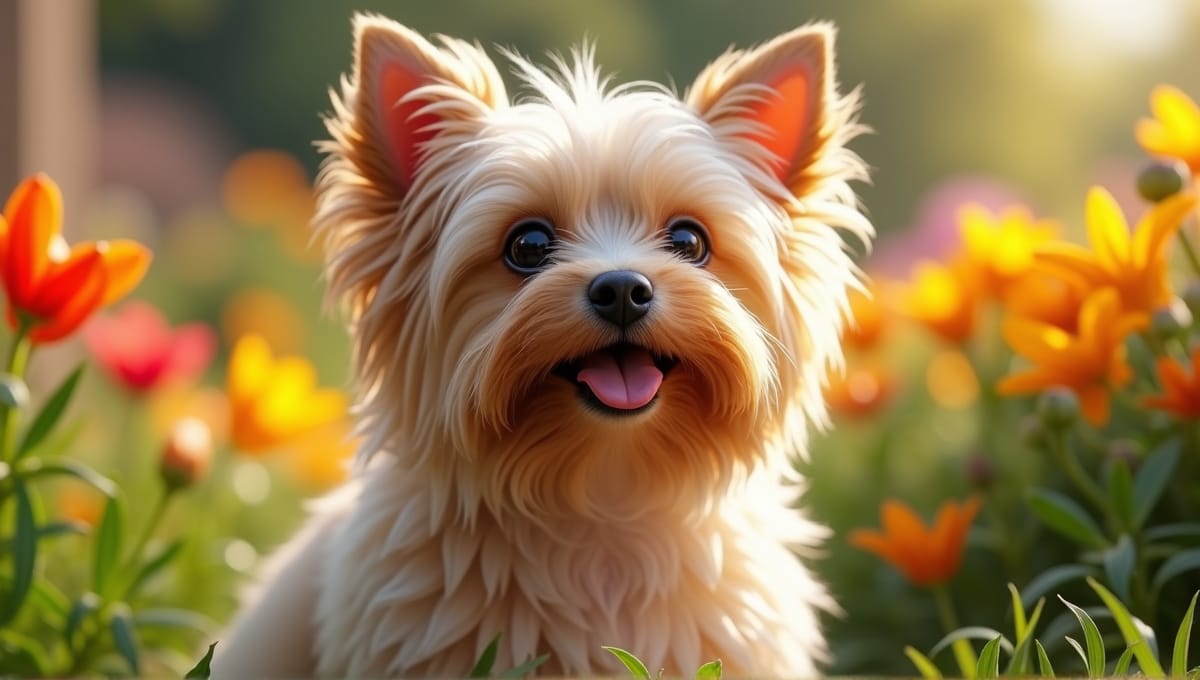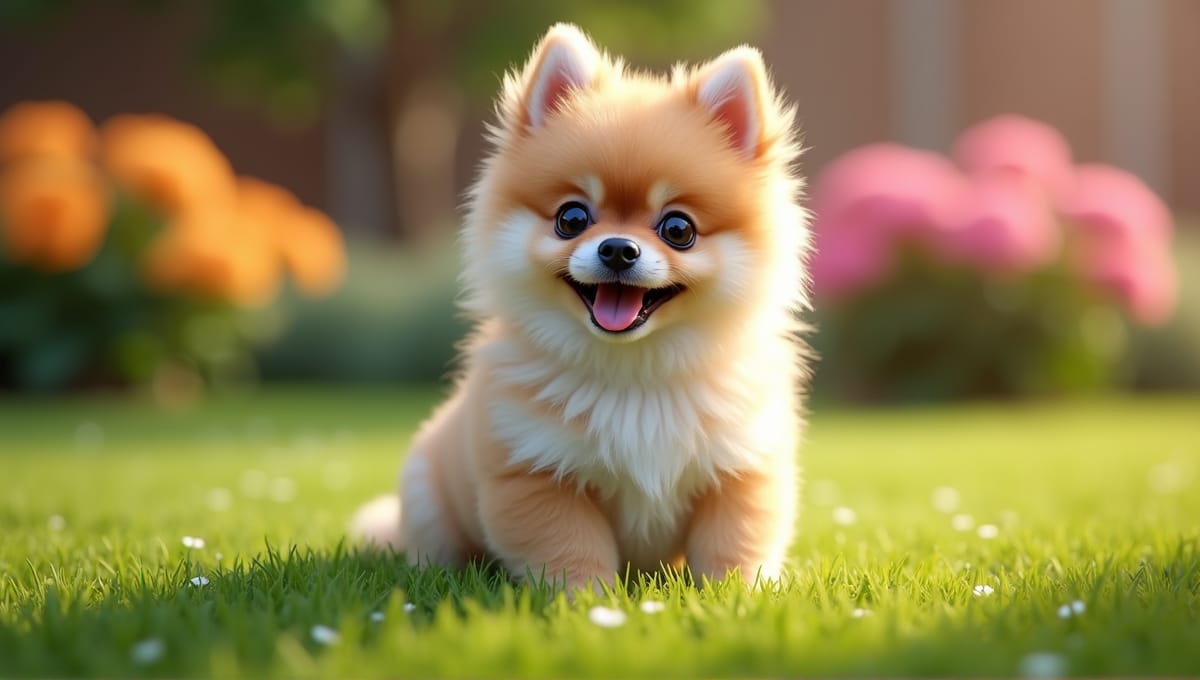Are you in the market for a small, fluffy dog? I’ve worked with dogs of all shapes and sizes over the years, and small fluffy dogs are always a favorite. They’re excellent dogs for apartment living, and they make great lap dogs. Yet there are so many to choose from. Here are the best small, fluffy dog breeds, so you can select the best fluffy dog for you.
Small Fluffy Dog Breeds: An Overview
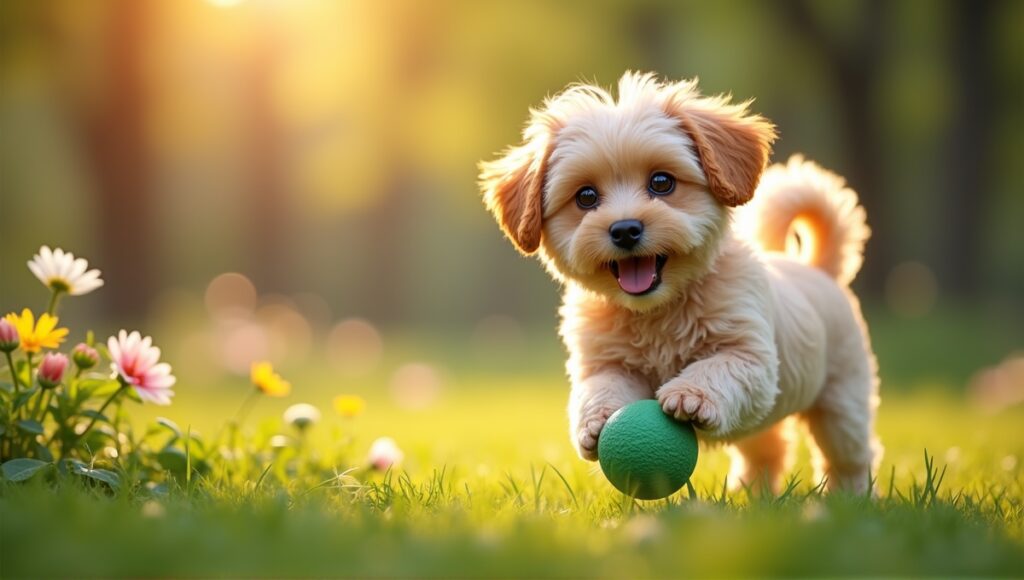
Small fluffy dog breeds are incredibly popular due to their cute appearance and delightful dispositions. These little pups are small packages of love, and you won't be able to resist them!
Small fluffy dogs are generally less than 20 pounds and 8-14 inches tall at the shoulder. Their coats are usually fluffy with soft, long hair that feels great to pet. However, this hair requires regular grooming to look its best.
There are many advantages to owning a small fluffy dog:
- Portable: You can easily carry and transport small dogs.
- Apartment friendly: Small dogs are a great choice for apartment living.
- Lower food expenses: Small dogs eat less than larger breeds, so food costs are lower.
- Longer lifespans: Many small dog breeds live between 12-16 years.
The demand for these breeds has exploded recently. Small dogs now make up 47% of all AKC registrations. Over the past decade, there has been a 55% increase in apartment living small dogs.
I've personally witnessed how much happiness these little dogs can bring to families. Despite their small size, they have the dispositions of larger breeds and are often affectionate, loyal, and energetic. Some small fluffy dogs can even be great small hunting dogs, combining their adorable appearance with practical skills.
Top 10 Small Fluffy Dog Breeds

Here are some of the most popular small fluffy dog breeds. Each breed has special qualities that could make it the ideal dog for you.
Bichon Frise
- Happy and playful
- Hypoallergenic
- Good with kids
Pomeranian
- Active and confident
- Fox-like appearance
- Double coat
Shih Tzu
- Affectionate and outgoing
- Long, silky coat
- Adaptable
Maltese
- Soft and fearless
- Beautiful, long white coat
- Little shedding
Havanese
- Smart and friendly
- Soft, wavy coat
- Great for families
Lhasa Apso
- Independent and sure of himself
- Long, flowing coat
- Good watchdog
Pekingese
- Regal and loyal
- Lion-like coat
- Low energy
Toy Poodle
- Very smart
- Curly, hypoallergenic coat
- Easy to train
Yorkshire Terrier
- Bold and active
- Long, silky coat
- Portable
Coton de Tulear
- Cute and smart
- Cottony coat
- Entertaining
I've been lucky enough to work with each of these breeds. And they all have something special about them. You're bound to find the perfect small fluffy dog among these breeds. If you're particularly interested in a small white dog breed, breeds like the Maltese or Coton de Tulear might be perfect for you.
Grooming Requirements for Small Fluffy Dogs
Grooming is an essential part of small fluffy dog care. Their long, beautiful coats require regular maintenance to keep them healthy and mat-free.
Brushing is the most basic form of grooming. You want to brush your fluffy dog at least 2-3 times per week minimum. Doing so will prevent 90% of shedding and uncomfortable matting. Most coat types are best suited for a slicker brush.
Many of these breeds also require professional grooming. Schedule appointments every 6-8 weeks to keep their coat in top shape. This allows them to put the dog in a bath haircut, and nail work.
Bathing frequency varies based on your dog's lifestyle and coat. Most small fluffy dogs benefit from a bath every 3-4 weeks. Use a shampoo specifically designed for dogs that is gentle on their coat and skin.
If your fluffy dog is particularly shed happy or tends to matt up easily, grooming can be a challenge. The best solution is simply to brush them often. Double-coated breeds in particular will shed more heavily twice per year during seasonal changes.
Proper grooming isn't just about aesthetics. It will reduce their skin issues by 70% and grooming gives you an opportunity to catch any potential health issues early. And your fluffy dog will be grateful for the extra attention!
Health Considerations for Small Fluffy Breeds
Most small fluffy dog breeds have common health problems you should know about. Knowing these common health issues can help you provide optimal care for your dog.
Common health problems in small breeds include:
- Dental issues
- Patellar luxation
- Tracheal collapse
- Heart problems
Each breed also has its own genetic predispositions. For example, Shih Tzus are likely to have eye problems, and Pomeranians may have hip dysplasia. Do your research on your selected breed and its particular health problems.
Regular preventive care is necessary. Take your dog to the vet for regular checkups. This allows the vet to catch any potential problems early. Vaccinations and preventing parasites are also important aspects of your dog's health.
Small breeds do tend to have dental problems more often than larger breeds, including overcrowding and tooth decay in their small mouths. You can avoid most dental problems by brushing your dog's teeth daily and getting regular professional cleanings.
I highly recommend pet insurance for these breeds. It can save you a lot in the long run if your dog has any unexpected medical problems and ensures you can give your dog the best care.
Exercise Needs of Small Fluffy Dogs
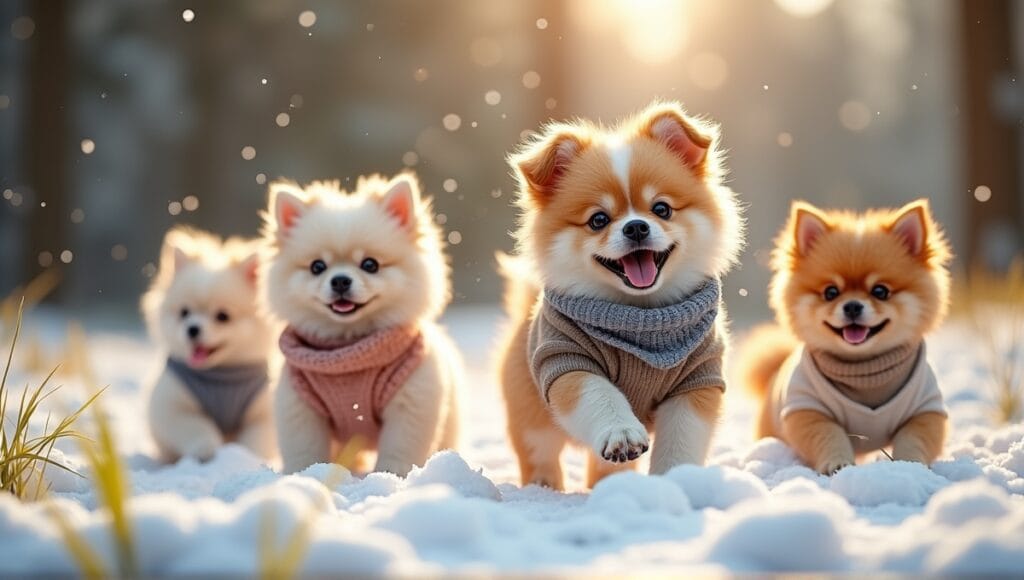
Don't be fooled by their size – even the best small fluffy dogs need regular exercise! These miniature mutts all require daily physical activity to thrive.
Most small fluffy dog breeds need about 20-30 minutes of exercise each day. This may include:
- Short walks (1-2 miles for healthy adults)
- Playtime in a fenced yard
- Indoor games
◦ Fetch
◦ Tug of war
Indoor activities are excellent for these breeds, especially in inclement weather. You can create obstacle courses or use puzzle toys to keep them mentally sharp.
Puppies and senior dogs have slightly different exercise requirements. Puppies have bursts of energy before quickly becoming tired, while senior dogs might need gentler, shorter activities. Always ask your vet for specific exercise guidance tailored to your dog's age.
Also, don't forget that exercising your dog isn't only about maintaining their physical health. It's also an excellent opportunity to bond with your four-legged companion and prevent behavior issues. After all, a tired dog is a happy dog!
Living with Small Fluffy Dogs
Small fluffy dogs are excellent companions in various living situations, and their adaptability is one of the things that makes them so lovable.
Many of these breeds do well in apartments because they're small, though they still require daily exercise and mental stimulation. A daily walk and a little indoor play will suffice to keep them happy even in a smaller space.
These dogs are also great with families, and children in particular. However, you need to watch them carefully, especially with young children who may accidentally hurt the dog. You should also train your children from a young age to be gentle and respectful to the dog.
Training and socializing these breeds is essential, so start training them early. Failure to do so can result in small dog syndrome, where the dog thinks they're in charge and becomes overly protective or aggressive. Fortunately, these breeds are intelligent and respond well to positive reinforcement training.
Many small fluffy dogs are also easy to travel with, as many of them are small enough to fit in airline approved carriers. The only thing you need to do is ensure they're comfortable in the carrier before a long trip.
In my opinion, these small dogs often become the center of the household. They adore the people in their life and are small enough to take everywhere with you.
Nutrition and Feeding for Small Fluffy Breeds
Good nutrition is essential for the health and well-being of small fluffy dog breeds. They're small creatures with a lot of energy, so they need a well-balanced diet.
Because small breeds have high energy levels and a small body, they have high energy requirements. Therefore, you should feed them nutrient-dense food. Look for high-quality dog food designed specifically for small breeds.
Be mindful of portion sizes to prevent obesity. It's easy for a small dog to gain excess weight, and this can lead to health problems. Follow the recommended feeding amount listed on the dog food packaging, and then adjust as necessary based on your dog's activity level and body condition score.
If you want a healthy coat, look for dog food with the following nutrients:
- Omega-3 fatty acids
- Biotin
- Vitamin E
Feeding schedules vary, but most adult small dogs do well on a two-meal-per-day schedule. Puppies may need to eat three to four times per day.
Avoid feeding table scraps and too many treats. This can lead to nutritional imbalances and obesity. If you want to use treats to train your dog, select healthy, low-calorie treats.
Always offer them fresh, clean water. Some small breeds are prone to dental problems, so you may want to include dental chews as part of their diet.
Every dog is different. Consult with your vet to determine the best feeding schedule for your fluffy dog.
Climate Considerations for Small Fluffy Dogs
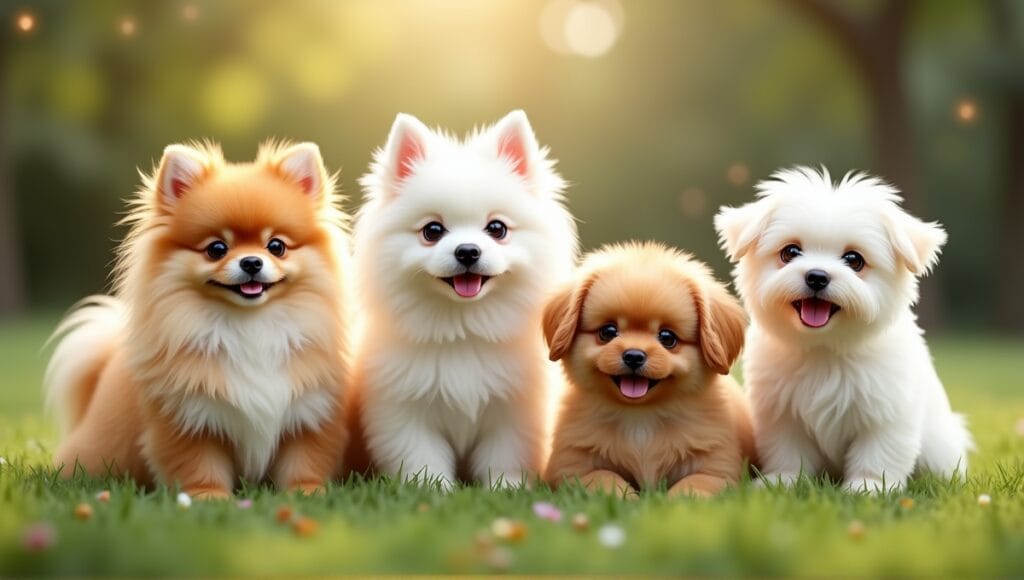
Climate is one of the most important factors to consider when caring for small fluffy dog breeds. Their coat type and size impact how they tolerate various climates.
Double-coated breeds, like the Pomeranian, have excellent climate versatility. They can handle temperatures that are 40°F (4°C) colder than single-coated breeds as their thick coat provides superb insulation. In fact, 75% of the cold weather defense comes from the undercoat.
However, the downside of that luxurious fluffy coat is that it's not ideal for warm climates. It increases the likelihood of heat stroke by 60%. In warm weather:
- Ensure they have plenty of shade and water
- Don't allow them to exercise during the hottest part of the day
- Use cooling mats or vests for outdoor activities
Be mindful of their seasonal coat changes. Double-coated breeds typically blow their undercoat twice a year, so brush them more frequently during these times to manage the shedding.
Indoor climate also matters as these dogs are quite sensitive. Keep your house at a comfortable temperature year-round, and in winter, protect their paws from ice and salt with booties or paw balm.
I've witnessed how paying proper attention to climate can significantly enhance the quality of life for a small fluffy dog. By understanding climate factors, you can guarantee that your fluffy pup will be comfortable in any climate.
Let’s Close This Out
Small fluffy dogs are excellent companions. They’re adaptable, lovable, and ideal for most living situations. You’ve discovered their grooming requirements, health issues, and exercise needs. However, small breeds require specific coat, teeth, and diet care. With the right maintenance, these tiny pups make great pets. I know these little dogs are great pets for any home. Whether you reside in a house or an apartment, a small fluffy dog could be the best dog for you.


